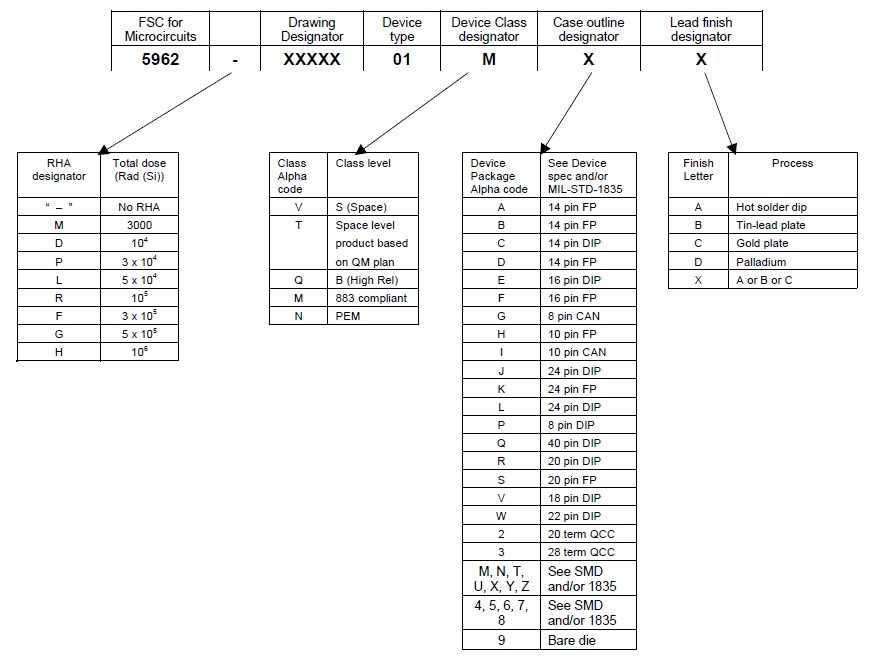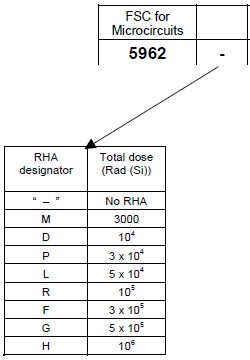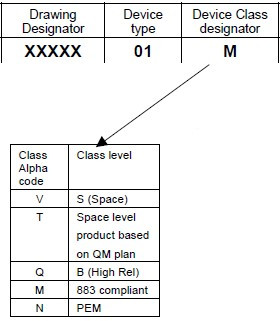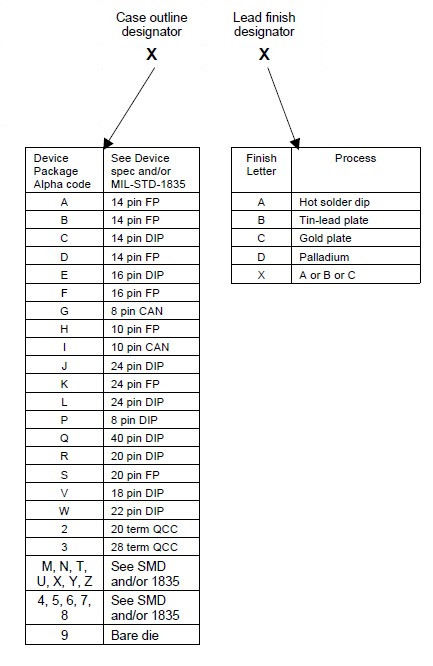
DLA SMD Part Numbering Breakdown
- Posted by Manuel Padial Pérez
- On December 18, 2019
- 0
SMD stands for Standard Microcircuit Drawing, which refers to documents generated by the US Defense Logistics Agency Land and Maritime (DLA), the former Defense Supply Center Columbus (DSCC).
The purpose of the SMDs is to develop a single standardized document (and references) to be used for different part manufacturers at the same time (on top of their own catalog part number) and OEMs, in order to minimize the proliferation of specifications and source control drawings.
SMDs include all parametric and quality data expected to be found in a device’s datasheet, including electrical performance characteristics, lead finishes, as well as package drawing and dimensions specifications.
The last page of each SMD includes a list of SMD Part Identifying Number (PIN) linked to the Commercial and Government Entity (CAGE) Code of the part manufacturer and its similar vendor reference. Let´s clarify how to read an SMD part number, breaking down each piece of the Part Identifying Number (PIN) and based on the sheet provided by DLA

- First is the Federal Stock Class designator (FSC), which is 5962 for Microcircuits (manufactured against the document MIL-PRF-38535, General Specification for Integrated Circuits, Microcircuits) and Hybrids, manufactured against generic specification MIL-PRF-38534, General Specification for Hybrid Microcircuits (except EMI filters which will follow a different breakdown rules deleting the first five digits).
- Next is the Radiation Hardness Assurance (RHA) designator, which indicates if the device is no RHA certified (the designator is “-“), and if so, the Total Ionizing Dose (TID) level that the device meets.


- The next five digits are the Drawing Designator (what is known as the SMD drawing number), which are unique to the generic part number used by the manufacturer.
- Following two digits specify the Device Type (also known as a variant) which differentiates whether there are electrical variations in functionally similar devices, being accurately detailed in the proper SMD.
- The Device Class Designator indicates the QML certification for this particular device. It can range from QML Class M to Class V for Microcircuits (including QML N for microcircuits encapsulated in plastic and QML Y for microcircuits employing a ceramic non-hermetic package) and QML Class H or Class K for Hybrids (and others less common like QML Class D, E or G)
EEE Space Parts Tool | MICROCIRCUITS
[qcld-ichart label=”QML Q,QML H,QML V,JAN B,QML K” value=”12975,6297,4245,3638,2026″ type=”bar” title=”Microcircuits” datasetname=”TOP QUALITY LEVELS” width=”95%” backgroundcolor=”#efefef” bgcolor=”‘#1e9fbf’,’#2dc41f’,’#404cd1′,’#c1801f’,’#42d6b8′” bordercolor=”#adadad” pointerstyle=”circle” linestyle=””]
- The Case Outline determines the package type. The details are included inside the proper SMD, with the Description Designator, Number of Terminals and Package Style. If the Case Outline and/or Descriptive Designator are not included in the latest issue of specification MIL-STD-1835 (Electronic Components Case Outlines), the drawing and dimensions of the package will be included in the proper SMD.
- The last digit is the Lead Finish designator, which refers to the process lead finish as specified in the latest issue of MIL-PRF-38535, appendix A. The following codes have been added to MIL-PRF-38535 in addition to those shown in the figure:
- E: Gold flash palladium
- F: Tin-lead alloy (BGA/CGA package) as defined in the applicable device document.

- Hi-Rel Intermediate bus converter and point of load - December 11, 2021
- ASIC or FPGA, how to choose between them - October 25, 2021
- Ceramic Hermetic DDR2 SDRAM Memory avalaible for Space - September 13, 2021

0 comments on DLA SMD Part Numbering Breakdown